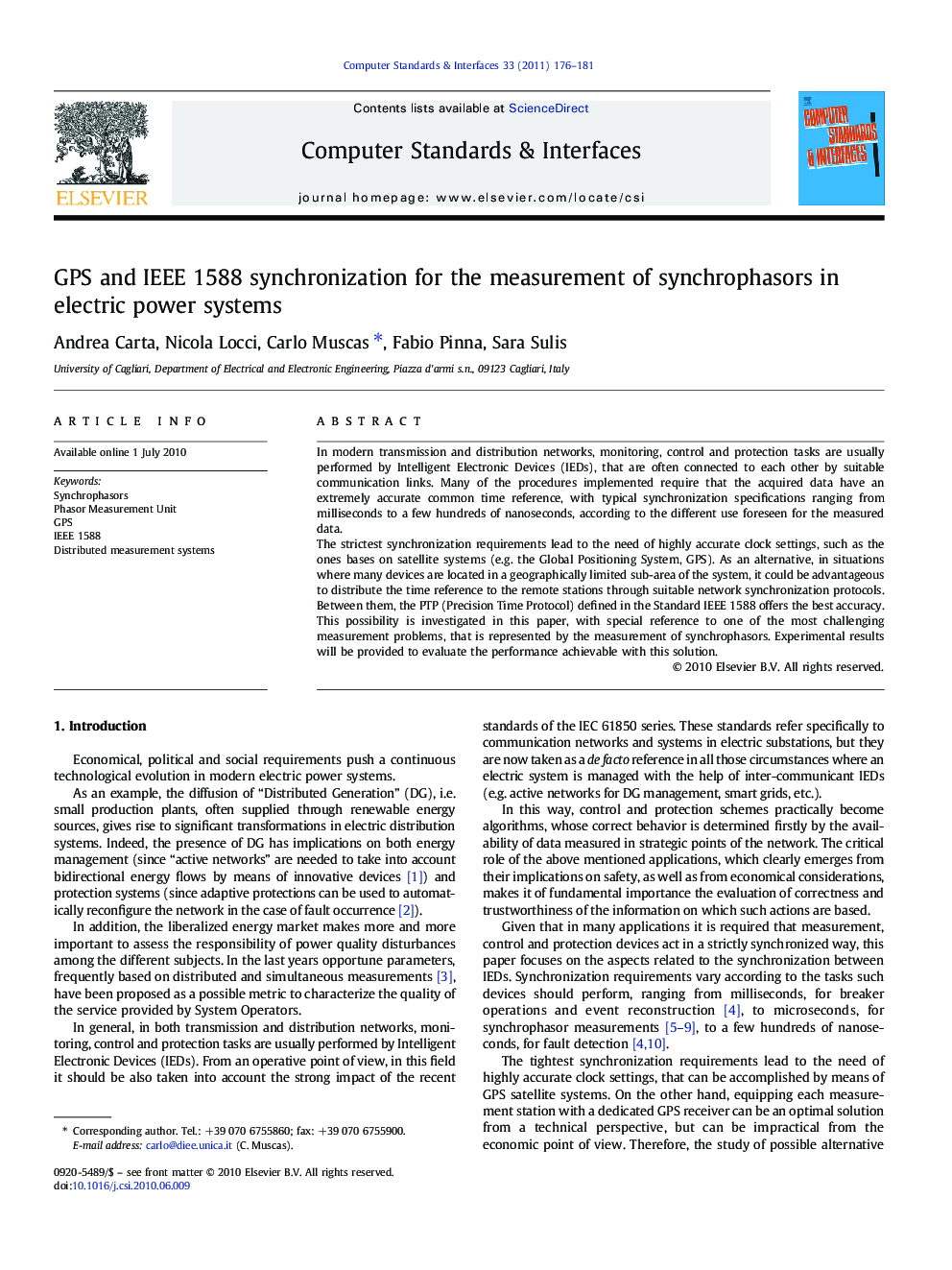| Article ID | Journal | Published Year | Pages | File Type |
|---|---|---|---|---|
| 454930 | Computer Standards & Interfaces | 2011 | 6 Pages |
In modern transmission and distribution networks, monitoring, control and protection tasks are usually performed by Intelligent Electronic Devices (IEDs), that are often connected to each other by suitable communication links. Many of the procedures implemented require that the acquired data have an extremely accurate common time reference, with typical synchronization specifications ranging from milliseconds to a few hundreds of nanoseconds, according to the different use foreseen for the measured data.The strictest synchronization requirements lead to the need of highly accurate clock settings, such as the ones bases on satellite systems (e.g. the Global Positioning System, GPS). As an alternative, in situations where many devices are located in a geographically limited sub-area of the system, it could be advantageous to distribute the time reference to the remote stations through suitable network synchronization protocols. Between them, the PTP (Precision Time Protocol) defined in the Standard IEEE 1588 offers the best accuracy.This possibility is investigated in this paper, with special reference to one of the most challenging measurement problems, that is represented by the measurement of synchrophasors. Experimental results will be provided to evaluate the performance achievable with this solution.
